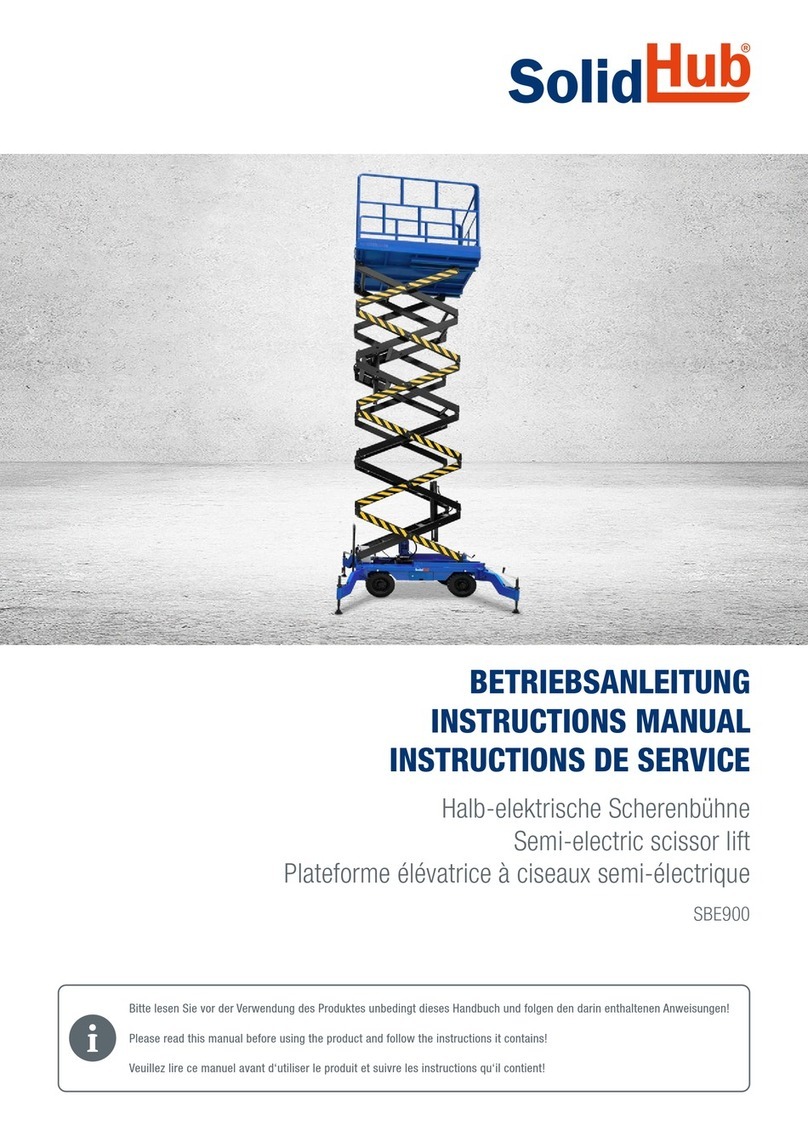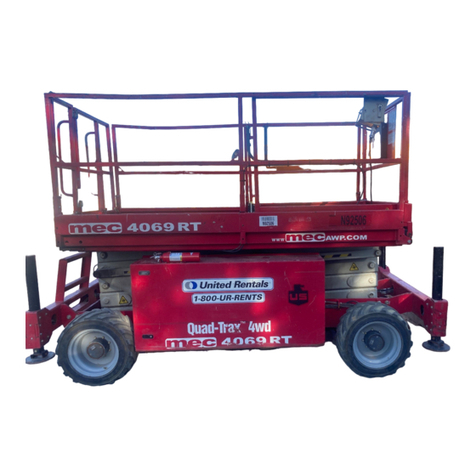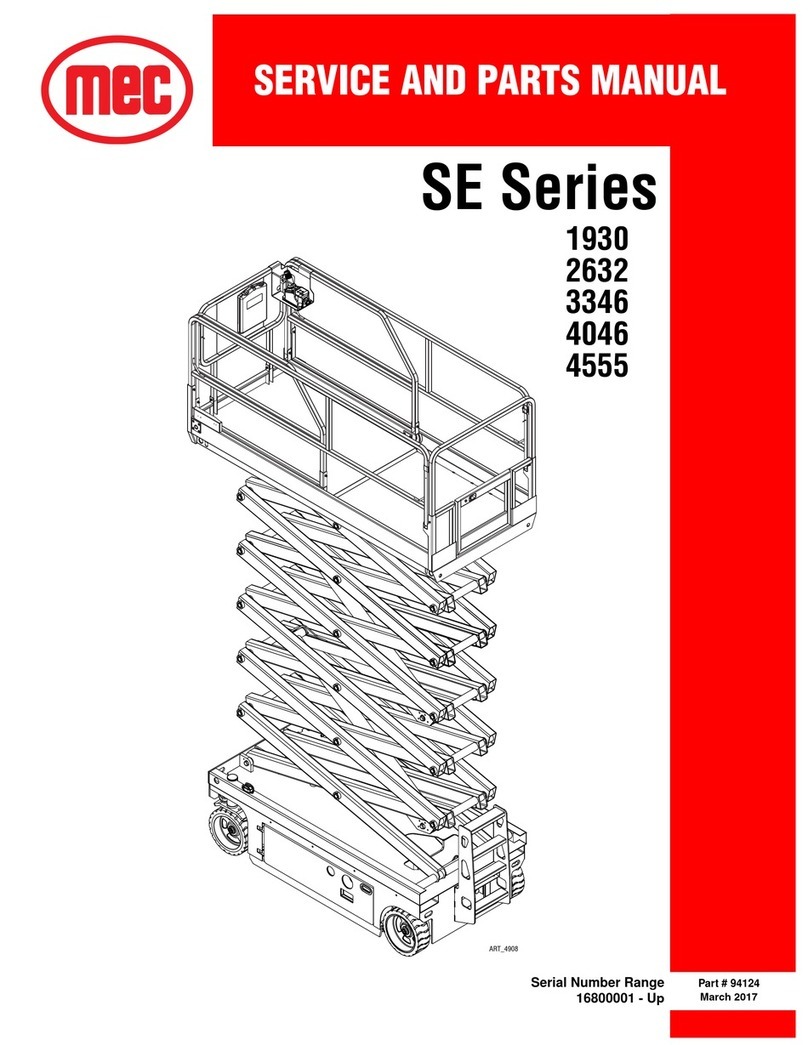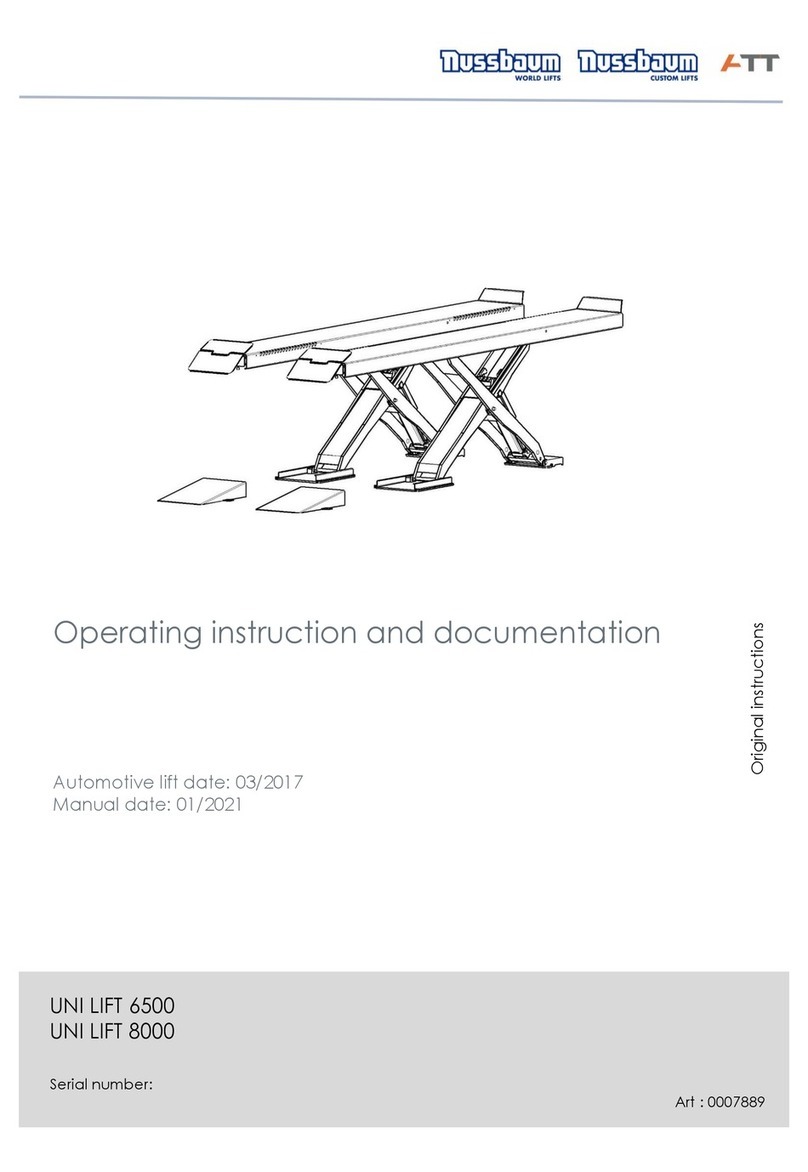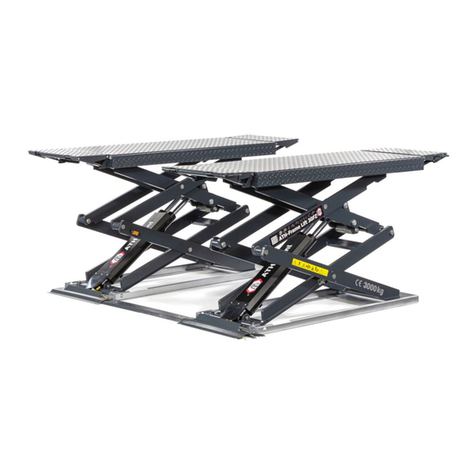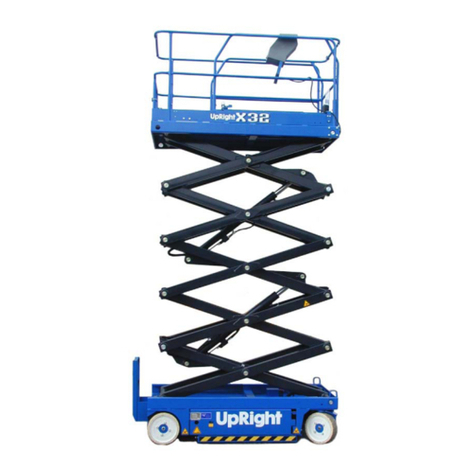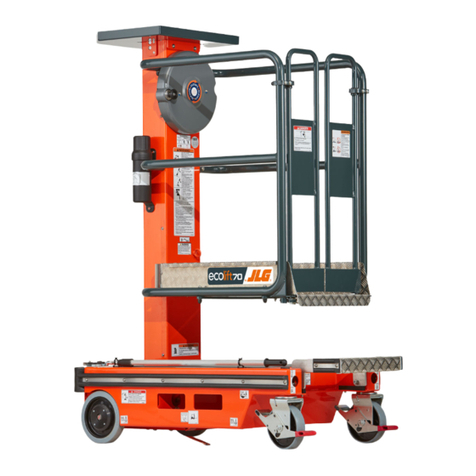
Le soulèvement, le transport, le déballage, le montage, l’installation et
la mise en service, le tarage ou les réglages initiaux, l’entretien
EXTRAORDINAIRE, la réparation, la révision, le déplacement et la de-
struction de l’élévateur doivent être effectués par les techniciens spé-
cialisés des REVENDEURS AUTORISES et des CENTRES DE
SERVICE APRES-VENTE AGREES par le Constructeur (voir en pre-
mière page l’adresse du service après-vente agréé).
Le constructeur dégage toute responsabilité vis à vis des dommages qui po-
urraient être causés aux personnes, aux véhicules ou autres objets lors des
interventions citées ci-dessus si celles-ci ont été effectuées par un personnel
non autorisé, ou lors d’une utilisation de l’élévateur incorrecte ou non prévue
par le constructeur.
Pour toutes ces opérations, ne sont indiqués dans ce manuel que les
aspects (opérationnels et de sécurité) qui peuvent être utiles à l’opérateur et
à l’agent d’entretien pour mieux comprendre la structure et le fonctionnement
de l’élévateur dans le but d’en améliorer l’utilisation.
Pour comprendre le langage adopté dans le présent manuel, l’opérateur doit
posséder une expérience spécifique dans le domaine du travail en atelier, du
service après vente, de l’entretien et de la réparation automobile, ainsi que la
capacité d’interpréter correctement les dessins et les descriptions figurant
dans ce manuel et la connaissance des normes générales relatives à la pro-
tection contre les accidents du travail en vigueur dans le pays où l’élévateur
est installé.
Les mêmes critères sont à prendre en compte pour le choix de l’agent d’en-
tretien qui devra, en plus, posséder les connaissances spécifiques et techni-
ques (mécaniques, électriques) nécessaires pour effectuer en toute sécurité
les interventions prévues dans ce manuel.
Dans les textes de ce manuel, vous trouverez souvent les termes “opé-
rateur” et “agent d’entretien” dont la signification est la suivante:
OPERATEUR : personne affectée à l’utilisation de l’élévate-
ur,AGENT D’ENTRETIEN : personne chargée de l’entretien ordinai-
re de l’élévateur.
Heben, Transport, Auspacken, Montage, Installation und Inbetriebnah-
me, Eichung und Einstellungen, AUSSERORDENTLICHE Wartung,
Reparatur, Inspektion, Verschiebung und Abbruch der Hebebühne
müssen durch Fachtechniker der vom Hersteller AUTORISIERTEN
VERTRAGSHÄNDLER oder AUTORISIERTEN
KUNDENDIENSTCENTER (siehe auf der Titelseite angegebenes au-
torisiertes Kundendienstcenter) durchgeführt werden:
Der Hersteller haftet nicht für Personen- und/oder Sachschäden, die auf die
oben beschriebenen Eingriffe zurückgeführt werden können, wenn diese
Eingriffe durch nicht autorisiertes Personal durchgeführt wurden, oder wenn
die Schäden auf einen unsachgemäßen oder unzulässigen Gebrauch der
Hebebühne zurückzuführen sind.
Für alle diese Tätigkeiten werden im vorliegenden Handbuch nur die Aspek-
te (bezüglich Betrieb und Sicherheit) berücksichtigt, die auch dem Bediener
oder dem Wartungsfachmann für ein besseres Verstehen der Struktur und
des Betriebs der Hebebühne sowie für einen besseren Gebrauch derselben
nützlich sein können.
Zum Verstehen der in diesem Handbuch angewandten Fachsprache muss
der Bediener über spezifische Werkstatterfahrungen bezüglich Pannen-
dienst sowie Wartung und Reparatur von Fahrzeugen verfügen, und muss
in der Lage sein, die in diesem Handbuch enthaltenen Zeichnungen und
Beschreibungen zu verstehen. Ferner muss der Bediener die im jeweiligen
Aufstellland der Hebebühne geltenden allgemeinen und spezifischen Unfal-
lverhütungsvorschriften kennen.
Die gleichen Kriterien gelten für die Wahl des Wartungstechnikers, der ferner
über die spezifischen technischen und Fachkenntnisse (Mechanik, Elektrik)
verfügen muss, die zur Ausführung der im Handbuch beschriebenen Arbe-
itsgänge unter sicheren Bedingungen erforderlich sind.
Im Handbuch werden häufig die Begriffe “Bediener” und “Wartungsfac-
hmann” verwendet. Diese Begriffe haben folgende Bedeutung:
BEDIENER: Für den Betrieb der Hebebühne zuständige Person.
WARTUNGSFACHMANN: Für die ordentliche Wartung der Hebe-
bühne zuständige Person.
La elevación, el transporte, el desembalaje, el montaje, la instalaci-
ón y puesta en funcionamiento, la verificación y los ajustes inicia-
les, el mantenimiento EXTRAORDINARIO, la reparación, la revisi-
ón, la manipulación y el desmantelamiento del elevador deben ser
ejecutados por los técnicos especializados del REVENDEDOR
AUTORIZADO o por los CENTROS DE ASISTENCIA AUTORIZADOS
del Fabricante (ver centro de asistencia autorizado indicado al
principio).
El fabricante no responde de daños a personas, vehículos u objetos ca-
usados por las intervenciones antes citadas si se han efectuado por
personal no autorizado o por un uso impropio o no consentido del ele-
vador.
Para todas estas actividades se indican en el presente manual, sola-
mente los aspectos operativos y de seguridad que pueden ser útiles al
usuario y al encargado del mantenimiento para comprender perfecta-
mente la estructura y el funcionamiento del elevador y para utilizarlo
correctamente.
Para comprender el lenguaje usado en este manual, el operario debe
tener experiencia específica en las actividades de taller, de asistencia,
mantenimiento y reparación de vehículos así como la capacidad de in-
terpretar correctamente los dibujos y descripciones indicades en el ma-
nual y el conocimiento de las normas preventivas generales y específi-
cas vigentes en el país donde se instala el elevador.
Idénticos criterios son válidos para la elección del técnico de manteni-
miento que deberá, además, poseer los conocimientos específicos y de
especialización (mecánico, eléctrico) necesarios para realizar con se-
guridad las intervenciones previstas en el manual.
En el texto del manual se encontrará a menudo las frases “operario” y
“personal de servicio” cuyos significados son los siguientes:
OPERARIO: persona que se ocupa del uso del elevador.
PERSONAL DE SERVICIO: persona que se ocupa del manteni-
miento ordinario del elevador.
7





